How to live in Costa Rica as a digital nomad: Residency Options
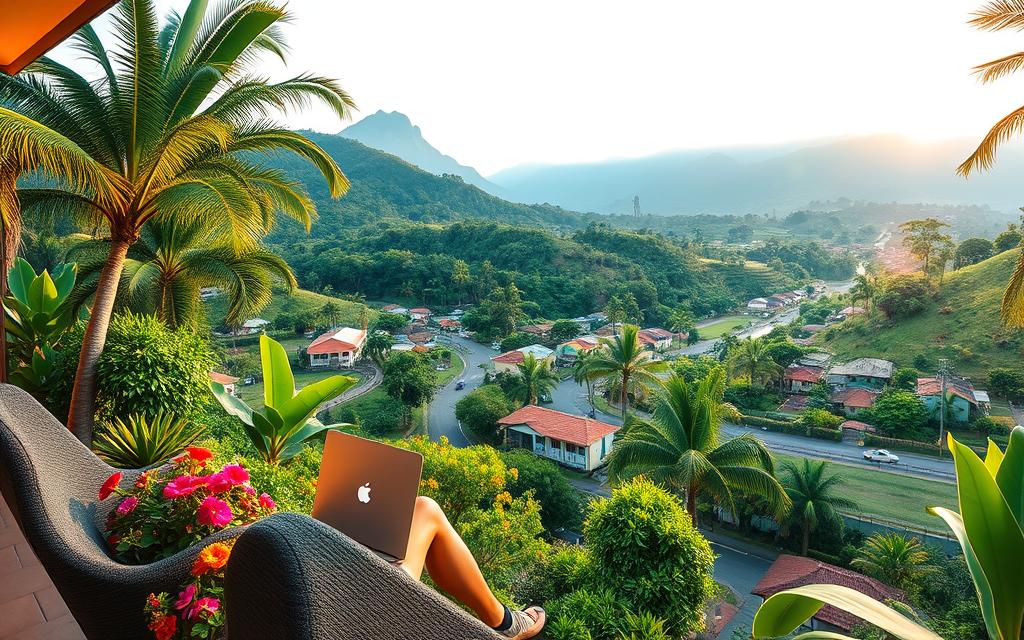
Costa Rica has emerged as a premier destination for digital nomads seeking a balance between work and lifestyle. The country's natural beauty, stable political climate, and growing infrastructure for remote workers make it an attractive choice.
We will explore the various residency options available, including the new digital nomad visa and traditional pathways. Costa Rica's "Pura Vida" philosophy and welcoming culture make it particularly attractive for those looking to improve their quality of life while maintaining professional productivity.
Understanding the legal pathways to residency is essential for digital nomads planning extended stays. With its expanding infrastructure and benefits like tax exemptions, Costa Rica is becoming a top choice for nomads worldwide.
The Digital Nomad Lifestyle in Costa Rica

The allure of Costa Rica for digital nomads lies in its unique combination of biodiversity, cultural richness, and remote work-friendly infrastructure. With a warm climate and friendly locals, the country boasts strong internet connectivity even in its more remote, natural settings, making it ideal for remote work.
What Makes Costa Rica Attractive for Digital Nomads
Costa Rica offers digital nomads an exceptional blend of natural beauty, biodiversity, and a relaxed lifestyle. The country's strategic location in the Central Time Zone makes it particularly convenient for professionals working with North American clients or companies.
The "Pura Vida" Philosophy
The "Pura Vida" philosophy permeates every aspect of Costa Rican culture, encouraging a balanced approach to life that values wellbeing, community, and appreciation for nature. This national ethos translates into a less stressful daily experience, where digital nomads can escape the hustle culture while maintaining productivity.
Costa Rica Digital Nomad Visa
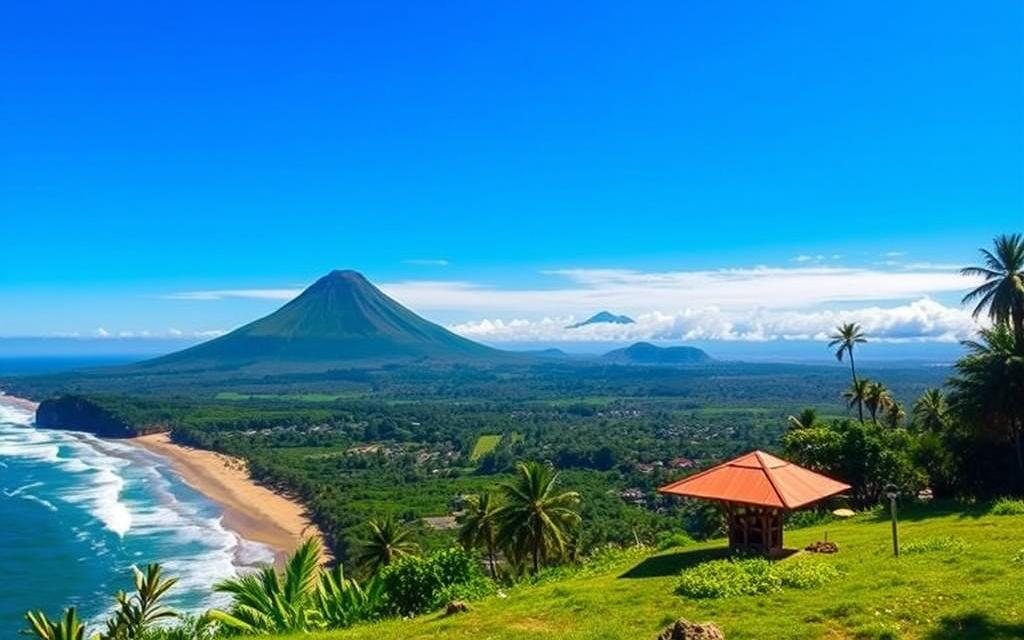
Costa Rica has introduced a specialized visa program for digital nomads, offering a unique opportunity to live and work in a tropical paradise. The Costa Rica Digital Nomad Visa, officially known as "Rentista de Nomada Digital," is designed to attract remote workers with its relaxed lifestyle and natural beauty.
Eligibility Requirements
To qualify for this visa, applicants must meet specific financial and documentation requirements. These include proof of stable monthly income, a valid passport, and comprehensive health insurance coverage for the duration of their stay.
Application Process
The application process involves submitting the required documentation online through the official government portal, paying a $100 application fee, and potentially completing biometric verification. Ensuring all documents are in order will streamline the process.
Benefits and Limitations
This visa grants holders legal status for one year, extendable for an additional year, allowing for a total of two years of legal residency. Benefits include tax exemptions on foreign-earned income and the ability to open local bank accounts. However, there are limitations, such as restrictions on local employment and the need to maintain minimum income requirements.
Other Residency Options for Digital Nomads

For digital nomads, Costa Rica offers multiple residency options tailored to different financial situations and long-term goals. While the digital nomad visa is an attractive choice, other traditional residency pathways may better suit certain individuals depending on their circumstances.
Rentista Residency
The Rentista Residency program is designed for individuals with a stable monthly income of at least $2,500 for two years. This option is ideal for those with pension, investment income, or guaranteed contracts, providing a straightforward path to residency.
Investment Residency
Investment Residency, or "Inversionista," requires a minimum investment of $150,000 in Costa Rican businesses, real estate, or government-approved projects. This pathway is suitable for entrepreneurs and investors looking to contribute to Costa Rica's development.
Permanent Residency
Permanent Residency becomes available after maintaining temporary residency status for three consecutive years. It offers long-term stability for those committed to living in Costa Rica. For more information on taxes and living in Costa Rica, visit this resource.
How to Live in Costa Rica as a Digital Nomad

To truly thrive in Costa Rica, digital nomads must be willing to adapt to the local culture and way of life. Our initial experience was a bumpy ride, with challenges ranging from a gas leak in our Airbnb to navigating crater-size potholes. However, with time, we learned to appreciate the local pace of life and found ways to make our digital nomad lifestyle work seamlessly.
Adapting to the Local Culture
Adapting to the local culture involves embracing the slower pace of life and understanding that efficiency may vary. Learning basic Spanish phrases can significantly enhance daily interactions and build rapport with locals.
Building a Routine
Establishing a consistent work routine is crucial for productivity, especially when surrounded by Costa Rica's natural attractions. Many digital nomads adopt a split schedule, working early mornings and evenings while taking midday hours for relaxation or exploration.
Best Places to Live in Costa Rica for Digital Nomads

With its diverse landscapes and climates, Costa Rica offers various options for digital nomads to find their ideal place to live and work. The country is home to a range of environments, from bustling cities to laid-back beach towns, each with its unique advantages and challenges.
San José
San José, the capital city, is a hub for digital nomads who prefer urban living. It offers fast internet, numerous coworking spaces, and a diverse food scene, making it perfect for balancing work and city life. We appreciate the modern amenities and reliable connectivity, although traffic congestion and safety concerns in some areas are notable.
Tamarindo
Tamarindo has become a hotspot for young digital nomads, offering a mix of great surfing, coworking spaces, and a vibrant expat community. We enjoy the thriving social and professional networks, as well as the numerous nightlife, dining, and recreational options. However, it's worth noting that Tamarindo can be expensive compared to other areas.
Santa Teresa
Santa Teresa attracts digital nomads seeking a relaxed surf town vibe. We love the strong community vibes and world-class surfing opportunities. Although it's a bit remote and can have higher prices for food and accommodations, the laid-back atmosphere makes it an ideal spot for those seeking work-life balance.
Puerto Viejo
Puerto Viejo offers a unique Caribbean charm, complete with stunning wildlife and laid-back beaches. We appreciate the more affordable cost of living compared to the Pacific coast and the unique cultural experiences. For more information on other great places to live in Costa Rica, visit Jaros CR.
Cost of Living in Costa Rica
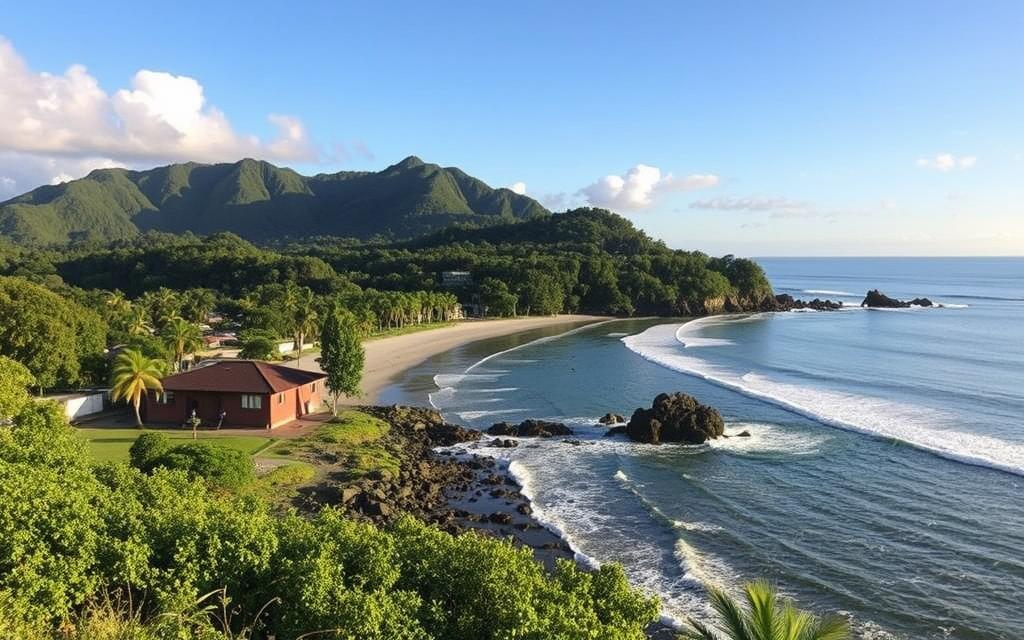
Costa Rica offers a unique blend of affordability and quality of life for digital nomads. The cost of living in Costa Rica can vary significantly depending on the location, with urban centers like San José and beach towns like Tamarindo having different price points.
Monthly Budget Breakdown
A digital nomad in Costa Rica can expect to spend around $1,500 to $2,500 per month. The largest expense is housing, with rent for a one-bedroom apartment ranging from $700 to $1,300. Utilities, internet, groceries, dining out, transportation, and coworking spaces add to the monthly expenses, with costs ranging from $50 to $300 for each category.
Tips for Saving Money
To save money, digital nomads can shop at local farmers' markets, use public transportation, take advantage of happy hour specials, and consider longer-term accommodation rentals. For more information on making the most of your stay in Costa Rica, including visa requirements, visit Jaros CR.
Finding Accommodation in Costa Rica

The search for the perfect place to stay in Costa Rica is a crucial part of the digital nomad experience. Fortunately, there are various accommodation options available to suit different preferences, budgets, and lengths of stay.
Short-term vs. Long-term Rentals
Understanding the differences between short-term and long-term rental markets is essential. Short-term rentals (1-3 months) offer flexibility but come at premium prices, while long-term rentals (6+ months) provide substantial savings and often include utilities.
Popular Platforms and Resources
Digital nomads can explore various platforms to find accommodation in Costa Rica. Airbnb and Booking.com are popular options for short-term rentals, while local real estate agencies and online property portals like Encuentra24 and OLX list properties for rent. Facebook Groups dedicated to specific locations are also valuable resources.
Internet Connectivity and Coworking Spaces

As digital nomads, we require reliable internet to work efficiently, and Costa Rica offers various options to stay connected. Before arriving, we can purchase an international travel SIM card from providers like Airalo, with costs ranging from $9 to $31 for an eSIM.
Internet Options and Reliability
Internet connectivity varies significantly by location in Costa Rica. Urban areas and digital nomad hubs offer reliable high-speed connections, while rural areas may have limitations. Major providers include Kolbi, Claro, and Movistar, with fiber optic connections available in cities.
Top Coworking Spaces
Costa Rica has numerous coworking spaces, particularly in San José, Tamarindo, and Santa Teresa. Popular options include Selina, Sentido Norte, and Beachside Cowork. When selecting a space, consider factors beyond internet speed, such as community events and networking opportunities.
Transportation in Costa Rica
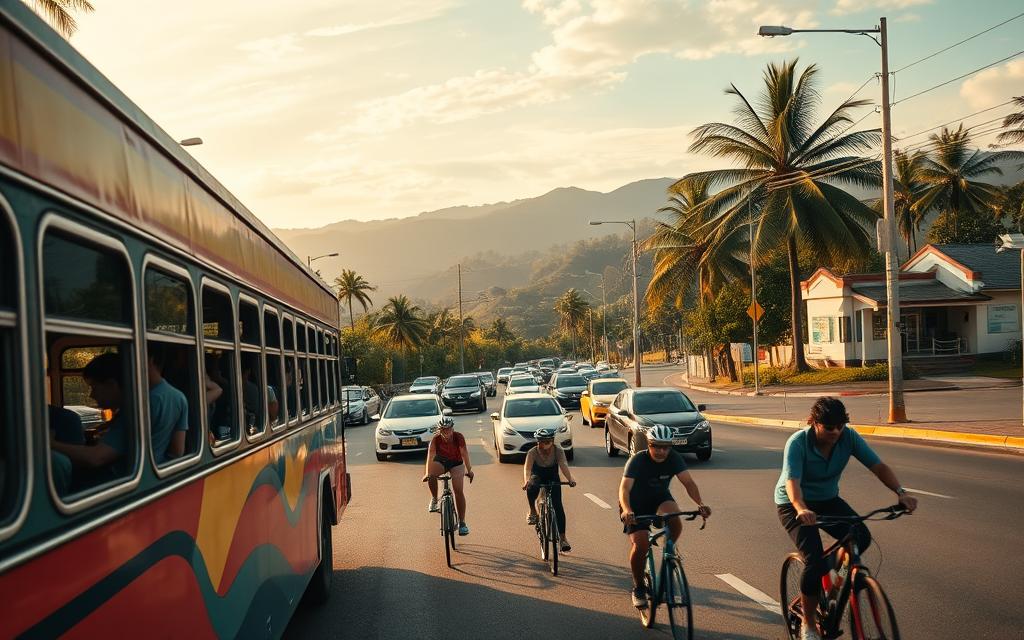
Costa Rica offers various transportation options for digital nomads, depending on their location and preferences. The country's transportation landscape varies significantly between urban and rural areas.
Public Transportation
Public transportation in Costa Rica is affordable, with an extensive bus network connecting most towns and cities. Fares are typically between $1-10, depending on the distance. However, schedules can be inconsistent, and travel times can be lengthy. In San José, public transportation includes buses and taxis, with ride-sharing apps like Uber also available.
Renting a Car and Driving Tips
Renting a car provides maximum flexibility, especially for those planning to explore multiple areas or live in remote locations. However, it comes with significant costs, ranging from $400-800 per month, plus insurance. Important considerations include mandatory insurance requirements and challenging road conditions outside major highways. Companies like ANSAR offer reliable car rental services.
Healthcare and Insurance for Digital Nomads
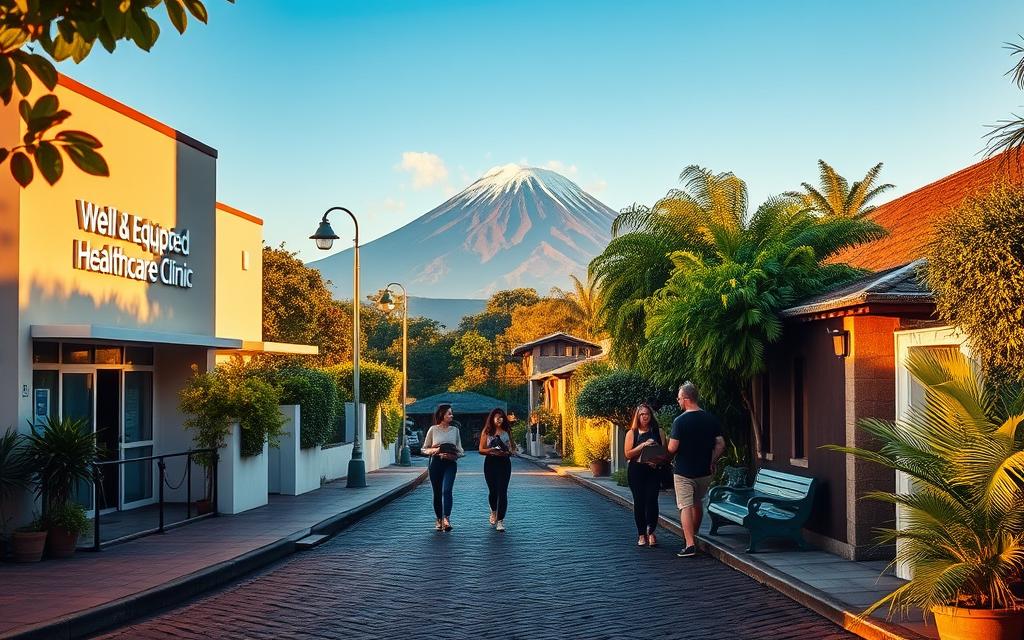
Understanding healthcare options is crucial for digital nomads living in Costa Rica. Costa Rica is renowned for its high-quality healthcare system, which is considered one of the best in Latin America. As a digital nomad, you have access to both public and private healthcare options. The public healthcare system, known as Caja Costarricense de Seguro Social (CCSS), provides universal coverage to citizens and legal residents, including digital nomads with a valid visa.
Public vs. Private Healthcare
The public healthcare system in Costa Rica is robust, but waiting times for non-emergency procedures can be lengthy. Private healthcare, on the other hand, offers faster service, English-speaking doctors, and modern facilities. Popular private hospitals include CIMA, Clínica Bíblica, and Hospital La Católica. While private healthcare is more expensive than public options, it is still significantly cheaper than in many countries, including the United States.
Insurance Requirements and Options
Health insurance is mandatory for digital nomad visa holders in Costa Rica. Your insurance must cover both medical care and evacuation services throughout your stay. Options include international health insurance plans, travel insurance with extended coverage, or local private insurance through companies like INS or BlueCross BlueShield Costa Rica. Ensure your policy covers routine care, emergency services, and adventure activities popular in Costa Rica, such as surfing and hiking.
Banking and Finances
For digital nomads, understanding Costa Rica's banking system is key to navigating financial transactions efficiently. Banking in Costa Rica presents unique challenges and opportunities, ranging from maintaining foreign accounts to opening local accounts for longer-term residents.
Opening a Bank Account
Opening a bank account as a non-resident can be challenging, as most banks require residency status. However, some institutions like Banco de Costa Rica and BAC San offer accounts to those with digital nomad visas. Required documentation typically includes a passport, proof of address in Costa Rica, proof of income, and sometimes reference letters.
Managing Money and Taxes
Managing money efficiently involves understanding that both U.S. dollars and Costa Rican colones (CRC) are widely accepted. Digital nomads can minimize currency exchange fees using services like Wise or Revolut, which offer favorable exchange rates. Tax considerations are crucial; digital nomad visa holders are exempt from Costa Rican income tax on foreign earnings but must comply with tax obligations in their home countries.
Digital Nomad Community and Networking
As we explore the digital nomad lifestyle in Costa Rica, connecting with like-minded individuals becomes essential. Costa Rica has developed vibrant digital nomad communities in key locations, offering newcomers opportunities to connect with professionals and overcome the isolation that can accompany remote work.
Finding Your Tribe
To find your community, start with online resources, including location-specific Facebook groups, Slack channels, and platforms like Nomad List that connect digital professionals. Joining these groups can provide valuable insights and connections.
Events and Meetups
Coworking spaces and local events serve as natural hubs for networking, with many offering community events, skill-sharing workshops, and social gatherings. Regular meetups range from professional networking sessions to social activities like beach cleanups and sunset gatherings, helping you build a strong network.
Challenges and How to Overcome Them
As digital nomads, we face unique challenges in Costa Rica that require adaptability and creative problem-solving. While the country's lush landscapes and vibrant culture make it an attractive destination, there are several obstacles to navigate.
Language Barriers
Language barriers are a significant challenge, as Spanish is the official language. We overcome this by taking basic Spanish lessons and using translation apps.
Cultural Differences
Cultural differences, such as the "Tico time" concept, require flexibility and understanding. Adapting to local customs and business practices is essential.
Practical Obstacles
Practical obstacles include infrastructure limitations like power outages during the rainy season. We prepare by having backup power solutions and alternative work locations.
Conclusion
Costa Rica stands out as a premier destination for digital nomads, offering a mix of natural beauty and modern amenities. The country provides multiple residency pathways, including a specialized digital nomad visa. While living costs are higher than in neighboring countries, the combination of political stability and extraordinary natural environment justifies the investment. With proper planning, digital nomads can thrive in this tropical paradise.


